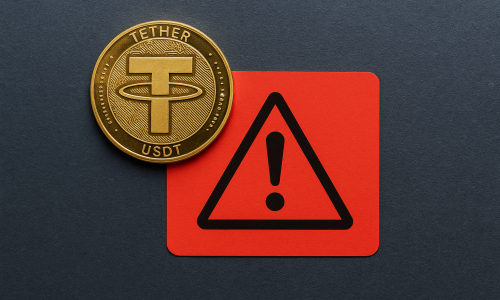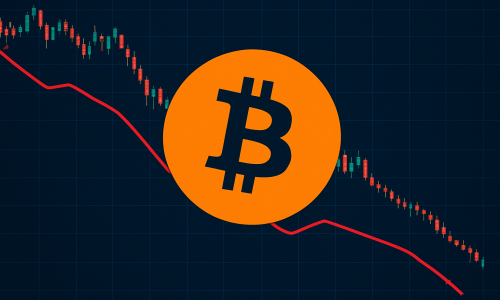Introduction
The cryptocurrency market has seen dramatic transformations over the last decade, and 2024 promises even more dynamic changes. With developments in regulation, technological advancements, and shifts in investor sentiment, this year could significantly reshape the market landscape. For savvy investors, understanding these trends could pave the way for substantial gains. This article delves into the key trends anticipated to impact the cryptocurrency market in 2024 and offers strategies to leverage these shifts for optimal investment outcomes.
1. Rise Of Institutional Investment And Major Market Players
In recent years, institutional investors have increasingly entered the crypto market. This shift is set to continue, with even more hedge funds, pension funds, and corporations recognizing digital assets as a hedge against traditional economic uncertainties. Key institutional players, such as BlackRock and Fidelity, have launched or are planning to introduce crypto investment products, with a specific focus on Bitcoin and Ethereum.
Investment Strategy: Positioning yourself alongside institutional investments can offer a significant advantage. As institutional funds increase their crypto holdings, demand for mainstream assets like Bitcoin (BTC) and Ethereum (ETH) is expected to surge. Investing in these major cryptocurrencies now, before prices escalate further, could yield significant returns as institutional interest solidifies.
2. The Evolution Of Decentralized Finance (DeFi) And Decentralized Exchanges (DEXs)
DeFi has been one of the fastest-growing sectors within the crypto industry, and in 2024, this trend shows no signs of slowing. Decentralized finance, particularly through DEXs, aims to eliminate the need for traditional financial intermediaries. With new protocols emerging that prioritize improved security, user experience, and scalability, DeFi platforms are expected to gain mainstream adoption.
Investment Strategy: Exploring investment options in DEX tokens, such as Uniswap (UNI) and PancakeSwap (CAKE), can provide exposure to the DeFi sector’s growth. Look for projects innovating within the DeFi space or expanding their ecosystem to attract more users. Early investments in promising DeFi platforms could capitalize on the sector’s anticipated expansion.
3. Expanding Utility Of Stablecoins In Traditional And Digital Economies
Stablecoins, cryptocurrencies pegged to stable assets like the U.S. dollar, have become essential for transactions within the crypto ecosystem. In 2024, stablecoins are anticipated to extend their utility, enabling cross-border payments, increasing adoption in remittance markets, and bridging the gap between digital assets and traditional finance.
Investment Strategy: Although stablecoins themselves aren’t designed to appreciate in value, their role in fostering crypto adoption makes them valuable assets for liquidity. Consider staking stablecoins or participating in yield farming on trusted platforms to generate passive income. Keeping a portion of your portfolio in stablecoins can provide stability and quick liquidity to seize investment opportunities as they arise.
4. Increased Regulatory Oversight And Its Potential Market Impact
As cryptocurrency gains mainstream adoption, governments worldwide are tightening regulations to ensure investor protection and financial stability. Notably, the U.S. SEC and the European Union have introduced new guidelines and frameworks that could redefine the operational landscape for exchanges, crypto companies, and digital asset projects. Although regulatory clarity can reduce uncertainty, sudden legislative changes could impact market volatility.
Investment Strategy: Regulations can impact certain sectors more than others, so diversify your portfolio to mitigate risks. Cryptocurrencies with robust compliance mechanisms, like Ethereum and Cardano, are generally better prepared to adapt to regulatory changes. Diversification across compliant projects can protect against regulatory shifts while ensuring potential growth in regulated markets.
5. Enhanced Focus On Layer 2 Solutions For Scalability
Ethereum’s network congestion and high transaction fees have led to the rise of Layer 2 solutions, which are expected to be a dominant trend in 2024. Layer 2 solutions, such as Optimism and Arbitrum, improve transaction speed and reduce costs, making platforms more accessible and scalable. These solutions are gaining traction as they address the scalability issues of primary blockchains.
Investment Strategy: Layer 2 solutions present a compelling investment opportunity, especially for long-term holders. Research projects focused on Ethereum’s scaling ecosystem, as well as other Layer 2 solutions, and consider adding them to your portfolio. Projects like Polygon (MATIC), which have a strong track record, are expected to play a significant role in shaping the future of blockchain technology.
6. Non-Fungible Tokens (NFTs) And The Metaverse Expansion
NFTs have evolved beyond simple digital art; in 2024, they are increasingly tied to gaming, real estate, and the metaverse. As the metaverse gains momentum, with companies like Meta (formerly Facebook) and Microsoft investing heavily, NFTs serve as a gateway to virtual experiences, allowing ownership of digital assets and creating new avenues for economic participation.
Investment Strategy: Diversifying into metaverse and NFT-related tokens, such as Decentraland (MANA) and Sandbox (SAND), can provide exposure to this innovative digital ecosystem. Additionally, investing in projects that offer NFTs with real-world applications could open doors to early growth in this sector.
7. Advancements In Blockchain Interoperability
Blockchain interoperability, or the ability of different blockchains to communicate, is critical for the future of decentralized applications. In 2024, cross-chain platforms like Polkadot (DOT) and Cosmos (ATOM) are expected to lead in creating seamless interactions between networks, expanding the scope of decentralized applications and services.
Investment Strategy: Investing in interoperability-focused cryptocurrencies can provide a stake in a more interconnected blockchain ecosystem. Projects enabling cross-chain capabilities are well-positioned to capture market share as demand for interoperable solutions grows. Polkadot and Cosmos are prime candidates, given their early focus on interoperability.
8. The Emergence Of AI And Blockchain Synergies
Artificial Intelligence (AI) and blockchain integration are setting the stage for transformative applications in finance, healthcare, and supply chain management. In 2024, we can expect projects leveraging AI for predictive analytics, fraud detection, and smart contract automation to become more prevalent, revolutionizing traditional industries.
Investment Strategy: Consider diversifying into tokens that blend AI with blockchain capabilities, such as Fetch.ai (FET) and SingularityNET (AGIX). These projects aim to harness AI’s predictive power and blockchain’s transparency, creating new investment frontiers with high-growth potential.
Conclusion
The cryptocurrency market in 2024 is poised for significant transformations driven by institutional adoption, technological innovation, and evolving regulations. Investors who strategically position themselves to ride these trends can potentially achieve considerable gains. While the market remains inherently volatile, focusing on sectors like DeFi, stablecoins, interoperability, and the metaverse can provide diverse exposure to the most promising areas of growth.
By staying informed about these trends and following sound investment strategies, crypto investors can navigate the complexities of this fast-evolving market and capitalize on the opportunities that lie ahead.



